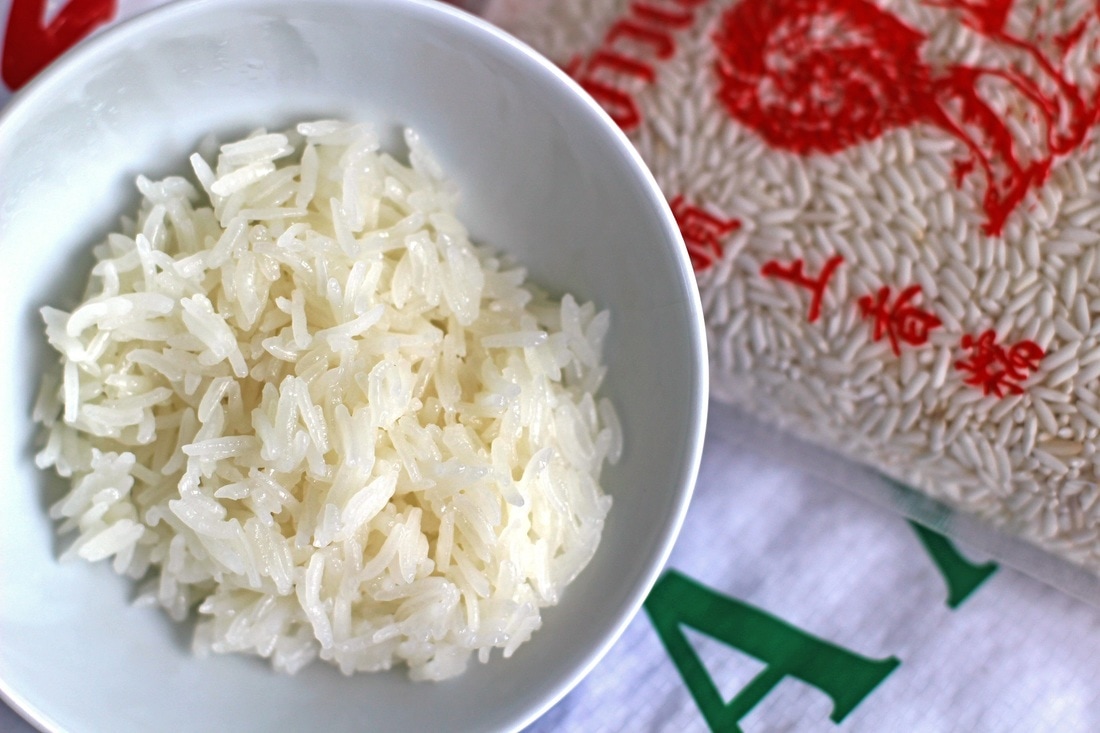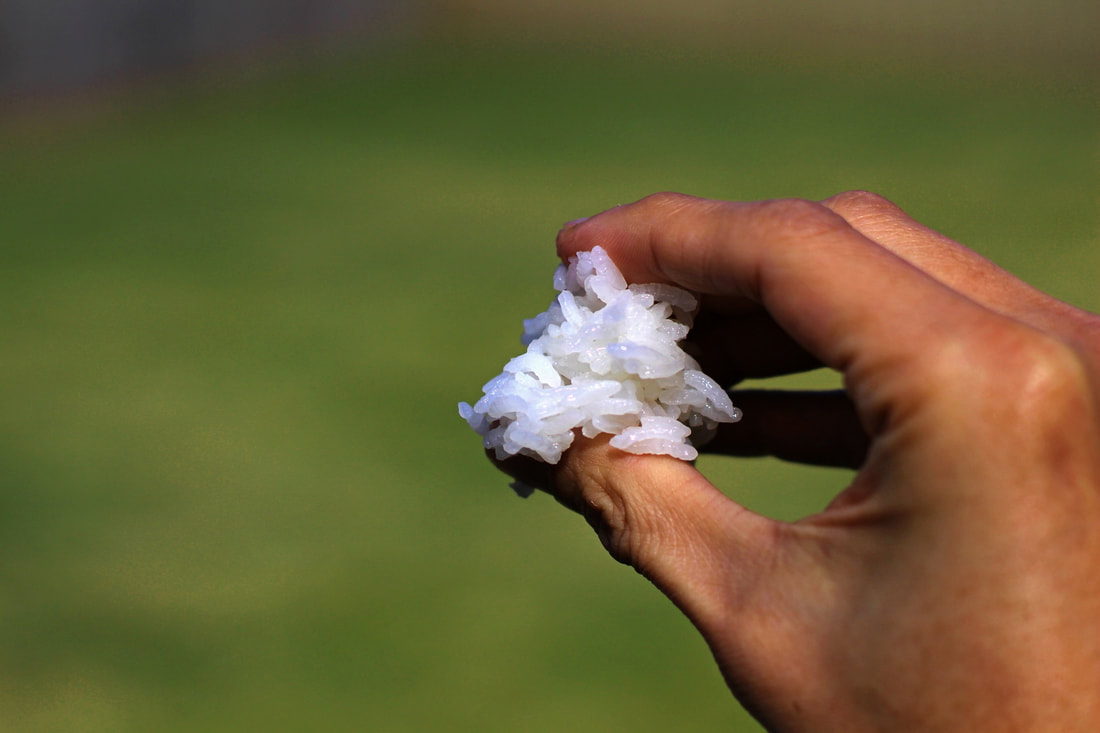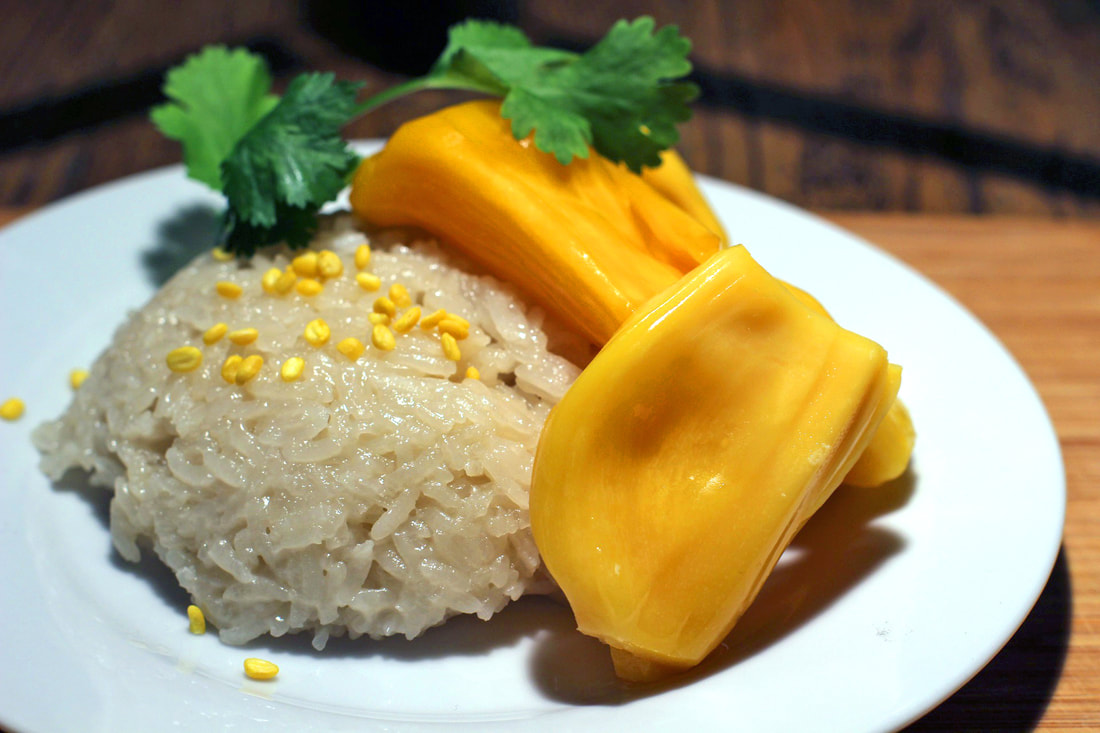Glutinous Rice ข้าวเหนียว
Glutinous Rice
Glutinous rice has slender opaque grains which look like snake fangs or “pin kaew”.
It is distinguished from other types of rice by having high amounts of amylopectin. Amylopectin is responsible for the sticky quality of glutinous rice.
In Thailand, glutinous rice is known as khao niao in central Thailand and Isaan, and as khao nueng in northern Thailand. Northern Thais (Lanna) and north eastern Thais traditionally eat glutinous rice as their staple food.


Glutinous rice is meant to be eaten by forming it into small balls with your fingers, then dipped into sauces of side dishes. This is much like how bread is used in the West.
Foods traditionally eaten with sticky rice:
- Almost all Isaan food and northern Thai food
- Green papaya salad or “som tam” (ส้มตำ)
- Laab (ลาบ) and other salads with meat
- Grilled meat
According to Thai tradition, Glutinous rice can put you fast asleep if too much is eaten.
When cooked, Glutinous rice is waxy, dense and translucent, with a chewy texture and a distinctive, slightly sweet aroma.
It is these characteristics which lends itself well for use in sweet desserts in addition to savoury dishes. There seems to be an overwhelming array of Glutinous rice desserts across Asia.
Some Typical Glutinous Rice Desserts:
- Coconut Sticky Rice and Mango khao neeo mamuang ข้าวเหนียวมะม่วง
- Bamboo Tubes of Sweet Custard Sticky Rice khao lam ข้าวหลาม


